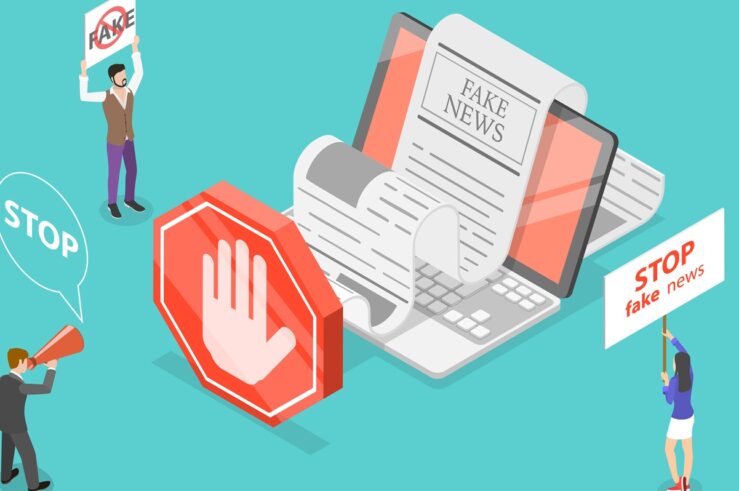Before concluding that “there ought to be a law” to remedy an unhappy situation, one should ask whether it’s really a law that’s causing the problem in the first place. I was reminded of that principle this afternoon when I read some remarks by Michael Pollan, doyen of the “slow food” movement, in today’s New York Times Magazine.
Responding to the question, “How can you tell if food is genetically engineered?,” Mr. Pollan answered:
You can’t, unless you’re willing to move to Europe or Japan, where the government requires that it be labeled. Ours doesn’t, so there’s no way to tell. This is despite the fact that 80 to 90 percent of Americans tell pollsters they want it labeled, and Barack Obama, as a candidate, once promised to make it happen. But the industry is afraid you won’t buy genetically modified foods if they’re labeled – and they’re probably right.
Mr. Pollan is correct on a couple of matters here. First, lots of people do want to know if they’re eating genetically modified food. My own view is that this is silly. Nearly all food products are, and for generations have been, “genetically modified” via hybridization, selective breeding, etc., and the scientific consensus is that there’s no increased risk when the modification occurs in a laboratory rather than the old-fashioned way. Nevertheless, many consumers do care about whether their food is genetically modified in the newfangled manner, and who am I (or you, or the government) to tell them that their preferences are invalid. Second, Mr. Pollan is correct in asserting that Big Ag doesn’t want to label GM food products, lest people refuse to buy them (or reduce the price they’re willing to pay for them). Indeed, large agribusinesses have lobbied vociferously against mandatory GM labeling rules like those imposed in Europe and Japan.
But Mr. Pollan is wrong to insinuate that regulations mandating GM labeling are necessary if consumers are to know whether food products are genetically modified. Given that a great many consumers disfavor genetic modification (of the newfangled variety, at least), one would expect entrepreneurs to produce non-GM foods and to tout the pedigree of their products. By engaging in “voluntary negative” labeling (e.g., “GM Free”), producers could boost demand for their products and provide consumers with useful information about GM status. Just as mandatory labeling of “Gentile” food isn’t necessary to enable observant Jews to fulfill their preferences for kosher options, the government need not mandate GM labeling in order to protect the interests of GM-phobes.
This assumes, though, that producers of non-GM products, like producers of kosher foods, are free to label their products as such. Unfortunately for consumers who would prefer to avoid newfangled genetic modification (the old-fashioned type is ubiquitous and unavoidable), current regulations hinder the sort of voluntary negative labeling that could accommodate heterogeneous preferences. Under an FDA Industry Guidance ostensibly aimed at fraud prevention (and drafted with significant input from Monsanto), sellers of non-GM foods are precluded from:
- Using acronyms such as “GM” or “GMO” (according to FDA, saying something is “non-GM” or “non-GMO” is misleading because people don’t understand these acronyms);
- Utilizing the term “genetically modified” (according to FDA, saying that a non-gene-transferred organism is not genetically modified is misleading because nearly all foods have been genetically modified through cross-breeding);
- Referring to “organisms” or “GMOs” (according to FDA, a food label touting the absence of GMOs is misleading because it implies that foods which are not GMO-free contain “organisms” — that is, living things);
- Claiming to be GMO “free” (according to FDA, a claim that a product is GM “free” implies a complete absence of GM material, and it’s very difficult to ensure that there are no trace amounts of GM material in a food item); and
- Asserting any implication of superiority (according to FDA, any label that implies that the food product is superior because it lacks GM material misleadingly implies that non-GM is superior).
In light of this guidance from a captured regulatory agency, sellers of non-GM foods are essentially forced to label their products as though they were playing the board game “Taboo,” in which players provide clues to their partners to identify a word but, in doing so, are forbidden to say any of the words one would most naturally use in conveying clues. Given the laundry list of terms the FDA has declared to be “taboo,” it should not be surprising that producers of non-GM products have not been able to market their products effectively. And if you can’t market them, why produce them in the first place?
At the end of the day, then, Mr. Pollan is wrong to place the blame for consumer ignorance of GM-status on governmental inaction. It is affirmative government regulation – not its absence – that precludes consumers from telling if their food is genetically engineered.




